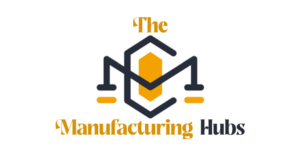In many organizations, certain processes take too long to complete, cost too much to execute, or fail to deliver consistent results. These inefficiencies can impact everything from sales outreach in retail companies to customer onboarding in tech startups, procurement in manufacturing firms, and employee onboarding in corporate settings.
Optimizing workflows doesn’t have to be disruptive or complicated. With the right strategies and tools, you can simplify processes, reduce delays, and deliver higher-quality outcomes. This article will explain what workflow optimization is, the benefits it offers, six techniques to optimize workflows, and real-life examples to inspire your journey.
What Is Workflow Optimization?
Workflow optimization involves improving organizational processes to make them smoother, faster, and more effective. It focuses on eliminating bottlenecks, reducing redundancies, and automating repetitive tasks. By analyzing workflows and applying efficient solutions, organizations can streamline their operations, save time, and cut costs without sacrificing quality.
Benefits of Workflow Optimization
1. Increased Productivity
Workflow optimization helps break down complex tasks into manageable steps, removes unnecessary actions, and leverages automation. When processes are efficient, employees spend less time on administrative tasks and more time on meaningful work.
Automated workflows also keep everyone informed about the process status, ensuring smoother collaboration. With fewer bottlenecks and delays, teams achieve faster turnaround times, resulting in successful projects and satisfied customers.
2. Cost Reduction
Optimized workflows reduce waste by eliminating redundant tasks, unnecessary meetings, and duplicate efforts. Automation can also handle repetitive tasks, reducing the need for additional staff and lowering payroll costs.
By streamlining resource usage, businesses can operate more efficiently while minimizing overhead expenses.
3. Enhanced Quality
Streamlined workflows ensure consistency, reducing the likelihood of human errors. Automation helps maintain accuracy in repetitive tasks, while standardization ensures that processes deliver consistent results every time.
Improved quality and efficiency lead to better customer satisfaction and a stronger brand reputation.
Six Techniques to Optimize Workflows
1. Process Mapping
Start by creating a visual representation of your workflows, such as a process map or diagram. This helps identify unnecessary steps, redundancies, and bottlenecks.
A clear process map provides insights into areas that can be automated or improved, allowing you to design a streamlined workflow that works efficiently.
2. Automation
Identify tasks that can be automated, such as data entry, sending reminders, or transferring information between systems. Automation reduces human error, speeds up repetitive tasks, and allows employees to focus on higher-value activities.
Automation tools also enable real-time tracking of tasks and performance, keeping everyone accountable and informed.
3. Standardization
Turn optimized workflows into standard practices. By ensuring that everyone follows the same steps, you can achieve consistent results regardless of who executes the process.
Standardized workflows also help organizations comply with regulations and maintain high-quality outcomes over time, creating a positive customer experience.
4. Cross-Functional Collaboration
Break down communication silos between departments to ensure seamless data sharing and collaboration. Automated alerts and notifications can improve communication, while shared tools ensure that everyone is on the same page.
When employees across teams collaborate effectively, tasks are completed faster, and duplication of efforts is avoided.
5. Continuous Improvement
Workflow optimization isn’t a one-time effort. Regularly monitor your processes and gather feedback from employees, customers, and partners. Look for areas of improvement and adapt workflows to meet changing business needs.
Continuous improvement keeps workflows efficient and aligned with organizational goals.
6. Employee Training and Empowerment
Encourage employees to provide input on process improvements and equip them with the skills needed to adopt new workflows. Engaged team members who feel valued are more likely to embrace changes and work efficiently within optimized processes.
Real-Life Examples of Workflow Optimization
1. Call Centers
Call centers use workflow optimization techniques like Six Sigma to streamline customer support workflows. By identifying inefficiencies and standardizing processes, agents can deliver more consistent and effective support.
2. Healthcare
Hospitals apply lean manufacturing principles to optimize patient flows and reduce wait times. Electronic health records and automated scheduling systems help streamline admissions and improve the patient experience.
3. Financial Services
Banks optimize workflows by automating loan approval processes and digitizing documentation. These measures save time, reduce errors, and improve customer satisfaction.
Workflow Optimization and Business Process Improvement
Workflow optimization focuses on individual processes, while business process improvement looks at larger organizational goals. The two are interconnected, as refining workflows contributes to better overall processes, and improving processes often requires updating workflows.
Conclusion
Workflow optimization is essential for improving efficiency, reducing costs, and delivering high-quality outcomes. By mapping processes, leveraging automation, and encouraging collaboration, businesses can simplify workflows and achieve their goals faster.
Invest time in optimizing your workflows today—you’ll save resources, enhance productivity, and build a more successful organization.

